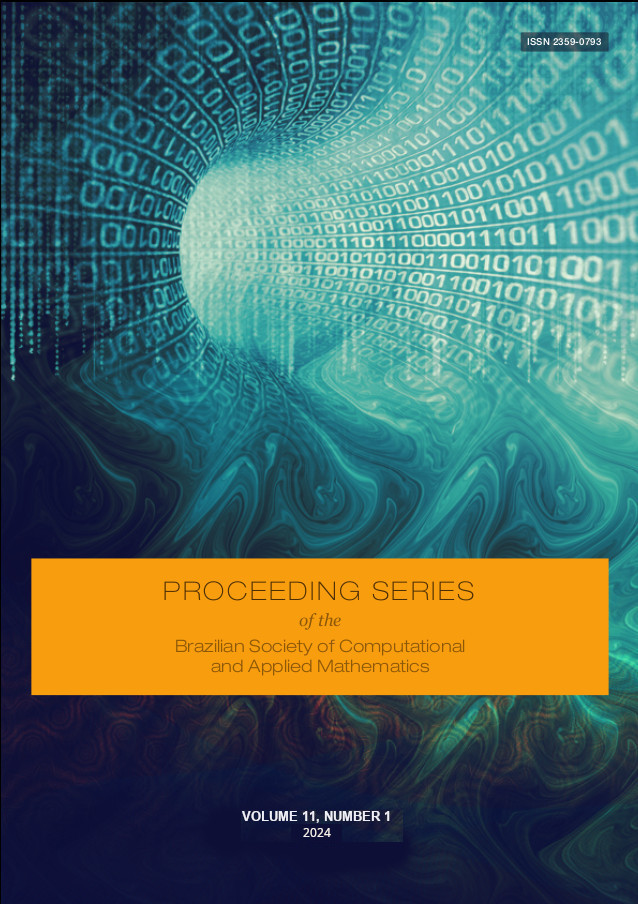Mixed-integer programming formulations for the optimisation of multi-directional petroleum exploration
DOI:
https://doi.org/10.5540/03.2025.011.01.0427Keywords:
Exploration and Production, Well Drilling, Hydraulic Flow Units, Mixed-integer ProgrammingAbstract
Directional drilling can be seen as a well-established technology that has advanced in the past few years, allowing higher productivity in petroleum exploration. On the other hand, the design of optimal multi-directional drilling paths has not gained much attention in the literature. Existing models and algorithms for the optimisation of directional drilling paths often disregard important petrophysical attributes or apply heuristic methods, which cannot guarantee the optimality of the generated solutions. In this paper, we employ mixed-integer programming (MIP) to optimize multiple directional drilling paths. This is achieved by integrating a screening step, capable of identifying the most promising target regions in terms of flow capacity, with an MIP model responsible for selecting and sequencing the identified targets. Our approach considers several constraints such as drift angles, maximum wellbore length, and minimum safety distances. In addition, a branch-and-cut algorithm is proposed for solving real-world multi-directional instances of challenging sizes. We carry out a case study in the Campos Basin to validate the proposed models. Preliminary results show that the optimized drilling paths have superior performance when compared to the historical average recovery factor of the Campos Basin.
Downloads
References
Y. Adulyasak, J. F. Cordeau, and R. Jans. “Formulations and branch-and-cut algorithms for multivehicle production and inventory routing problems”. In: INFORMS Journal on Computing 26.1 (2014), pp. 103–120.
M. K. Almedallah, A. A. Al Mudhafar, S. Clark, and S. D. Walsh. “Vector-based three-dimensional (3D) well-path optimization assisted by geological modelling and borehole-log extraction”. In: Upstream Oil and Gas Technology 7 (2021).
D. L. Applegate, R. E. Bixby, V. Chvatál, and W. J. Cook. The Traveling Salesman Problem: A Computational Study. Princeton University Press, 2006.
A. Atashnezha, D. A. Wood, A. Fereidounpour, and R. Khosravanian. “Designing and optimizing deviated wellbore trajectories using novel particle swarm algorithms”. In: Journal of Natural Gas Science and Engineering 21 (2014), pp. 1184–1204.
G. D. Avansi and D. J. Schiozer. “UNISIM-I: synthetic model for reservoir development and management applications”. In: International Journal of Modeling and Simulation for the Petroleum Industry 9.1 (2015), pp. 21–30.
A. Ben-Tal, L. El Ghaoui, and A. Nemirovski. Robust optimization. Vol. 28. Princeton: Princeton university press, 2009.
C. P. B. Fernandes, W. P. Coutinho, J. W. L. Silva, M. D. Santos, and G. P. Oliveira. “Optimal path planning for directional wells across flow units’ many-targets”. In: Journal of Petroleum Exploration and Production Technology (2023), pp. 1–13.
G. P. Hersir, E. Á. Guðnason, and Ó. G. Flóvenz. “7.04 - Geophysical Exploration Techniques”. In: Comprehensive Renewable Energy (Second Edition). Ed. by Trevor M. Letcher. Second Edition. Oxford: Elsevier, 2022, pp. 26–79.
W. Huang, M. Wu, L. Chen, J. She, H. Hashimoto, and S. Kawata. “Multiobjective drilling trajectory optimization considering parameter uncertainties”. In: IEEE Transactions on Systems, Man, and Cybernetics: Systems 52.2 (2020).
C. S. Khor, A. Elkamel, and N. Shah. “Optimization methods for petroleum fields development and production systems: a review”. In: Optimization and Engineering 18.4 (2017), pp. 907–941.
R. C. McCann and P. V. R. Suryanarayana. “Horizontal well path planning and correction using optimization techniques”. In: Journal of Energy Resources Technology, Transactions of the ASME 123.3 (2001), pp. 187–193.
C. E. Miller, A. W. Tucker, and R. A. Zemlin. “Integer programming formulation of traveling salesman problems”. In: Journal of the ACM (JACM) 7.4 (1960), pp. 326–329.
M. Miolato. “Exact and heuristic algorithms for multi-robot system routing, oriented to underwater monitoring.” PhD thesis. Dipartimento di Matematica “Tullio Levi-Civita”, Università di Padova, 2022.
J. Schneider and S. Kirkpatrick. Stochastic optimization. Berlin: Springer Science & Business Media, 2007.
J. A. Short. Introduction to directional and horizontal drilling. Tulsa: Pennwell Corporation, 1993.
T. A. Simões. “Identificação de zonas de produção e recuperação de óleo baseadas em unidades de fluxo hidráulico e simulações computacionais”. PhD thesis. Programa de Pós-Graduação em Engenharia Mecânica, Universidade Federal da Paraíba, 2017.
D. Tiab and E. C. Donaldson. Petrophysics: Theory and Practice of Measuring Reservoir Rock and Fluid Transport Propertie. Oxford: Gulf Professional Publishing, 2011.
P. Toth and D. Vigo. Vehicle routing: problems, methods, and applications. Philadelphia: Society for Industrial and Applied Mathematics, 2014.

